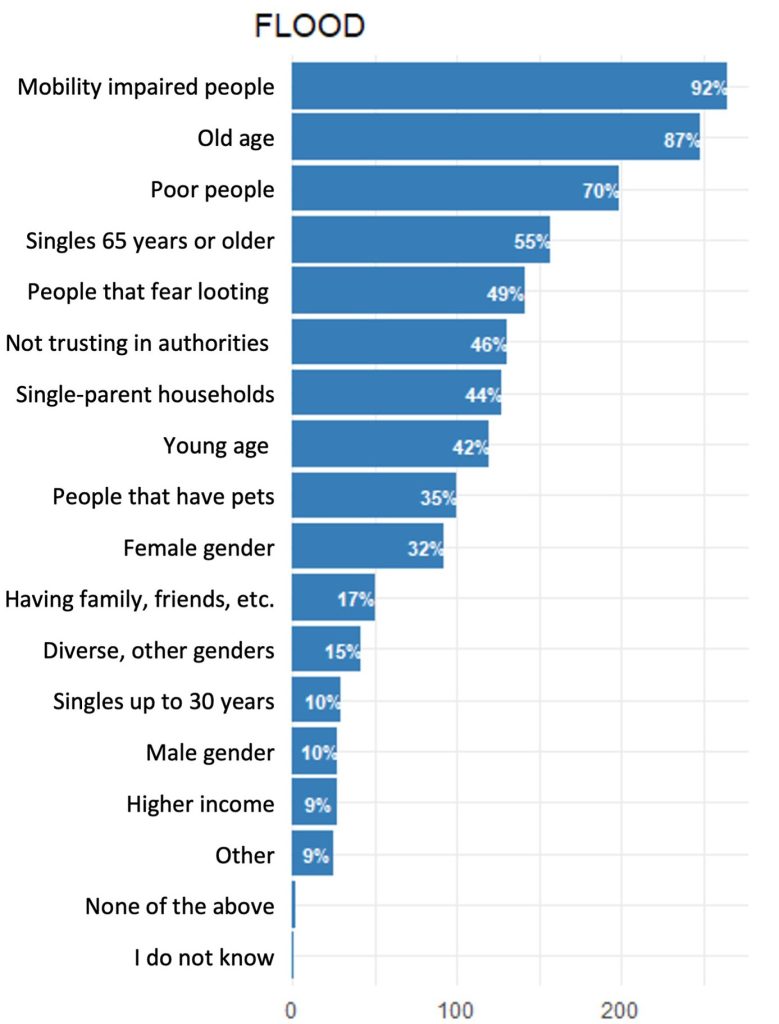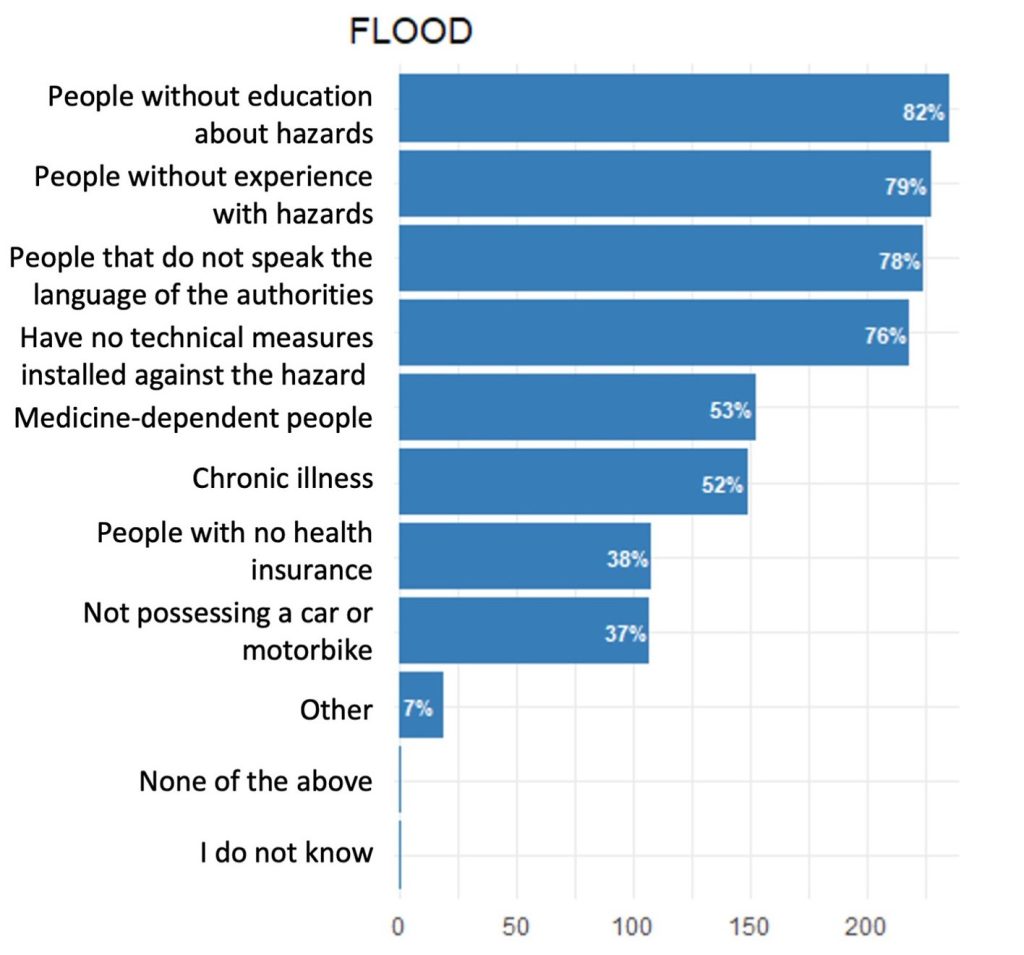Among all social Vulnerability characteristics, demographic ones are among the most cited in the 67 cases studied in the article. However, a consensus on whether some characteristics are universally drivers of Vulnerability has not been reached yet.
Age: Although children have been shown to be a key to recovery due to creation of social interactions between communities through schooling and other activities, Vulnerability linked to age has mostly been shown for the “very old” and “very young” people. This is due to their dependency status and their physical conditions which, for example, may lower their ability to escape danger due to lack of mobility. These population categories may also need higher care services after the Disaster.
➔ Example “age”: In Ault, France, the population is 50.7 years old on average, one of the highest among the cases studied in this web documentary which could lead to an important age-linked social Vulnerability. The same issue can be highlighted in Kokemäenjoki, Finland, where the local average age is higher than the national one, as well as in West Sussex, England, where the proportion of the elderly is above national levels. This implies a potential enhanced Vulnerability to floods in that part of the country.
Cultural diversity: Cultural diversity is the simultaneous expression of different cultures within a population linked to ethnic origins of individuals. These ethnicity and cultural differences may influence, to some degree, residential locations in high hazards areas as it can be linked to socioeconomic status and education factors. However, it is not a universal truth: for example, in Ault, France, while there is more social diversity among the people living on the coastline compared to the city center, houses in the first row next to the sea are mostly luxurious villas.
Ethnicity can in some contexts create cultural and language barriers hampering pre-Disaster Mitigation and post-Disaster access to resources for recovery. This has also been highly reported as a Vulnerability driver by experts and researchers in the field of Risk Disaster (cf. Image 2). At the same time, it has been shown that groups displaying a high ethnic diversity can be more resilient due to a strong social proximity inside their social group leading to exchanges of resources.
➔ Example “Cultural Diversity”: The Slough neighborhood (along the River Thames, England) is characterized by an important cultural diversity which can lead to an increased Vulnerability of some ethnic and/or socio-economic groups. The Helsinki metropolitan area is also a very culturally diverse area which can lead to the same Vulnerability issues.
Family structure: Family structure describes people living in the same households and the relationships between them. Single parents families have been highlighted to be more vulnerable to flood consequences as this type of social profile influences the social capital of the household and therefore lowers its ability to access resources through social links. This characteristic is believed to be a vector of Vulnerability by experts and researchers in the field (cf. Image 3).
➔ Example “Family Structure”: In Geraardsbergen, Belgium, the high percentage of single-parent families expected to grow during the upcoming years, has been emphasized as a social Vulnerability driver.

Gender: i.e. in this case the social construction of sexual identity to which oneself identifies as can have an effect on social Vulnerability to floods, especially when linked to other Vulnerability drivers, and rarely on its own. Women tend to accept more responsibilities than men when it comes to family care and they often win lower wages compared to men. However, due to their sometimes risky behavior linked to rescuing initiatives, young- and middle-aged men increase their social Vulnerability. Although women might be financially more vulnerable to floods than men, they have also been shown to have a higher knowledge of the Risk and better coping abilities.
➔ Example “Gender”: In the Royal Borough of Windsor and Maidenhead neighborhoods along the River Thames, the gender pay gap is higher than the national one which raises the question of women’s financial Vulnerability to flood damages.
Functional and care needs: Functional needs refer to the ability of someone to execute the activities he/she needs to while care needs refer as the necessity of someone to access care services. Populations having special needs (institutionalized people, chronically ill people, nursing home residents and people needing special care in general) can be more socially vulnerable. Their potential lowered mobility can affect their ability to evacuate, access to medication can be compromised and care services can be disrupted as a result of a flood event, leading to distorted access to care help.
➔Example “Functional and Care needs”: In Beerse, Belgium, a healthcare facility for the elderly is particularly vulnerable to floods as it requires a specific evacuation plan. 13,6% inhabitants of Geraardsbergen suffer from chronic illnesses which can make them more vulnerable to floods.
Demographic characteristics are sources of social Vulnerability in many ways and some factors linked to these characteristics, such as functional needs and old age have been described by experts and researchers to be among the personal characteristics resulting mainly in Vulnerability (cf. Image 3). However, this is not an universal fact as some of these characteristics can, at the same time and in some contexts, improve the Resilience of a group facing flood damages.
Want to go further?

